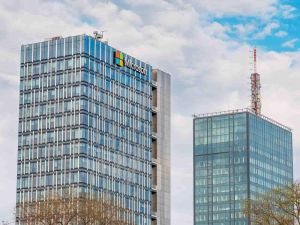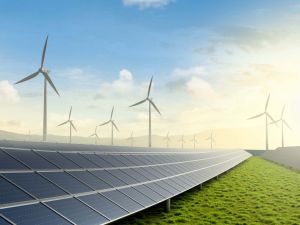Infrastructure is the thing that connects people with each other and the natural environment. It is the foundation for all the services we have come to depend on. Infrastructure developments spark economic growth and improve the quality of people’s lives.
| 🏗️ How do infrastructure ETFs compare to other types of ETFs? | Infrastructure ETFs are a specific type of sector ETF focused on companies involved in infrastructure-related sectors. |
| 🤔 What assets do infrastructure ETFs typically invest in? | Assets in companies involved in transportation, utilities, energy, telecommunications, engineering, construction, and other infrastructure-related sectors |
| 💷 Can infrastructure ETFs be used for income? | Yes, through dividends paid by the underlying companies |
| ⚠️ Are risks associated with investing in infrastructure ETFs? | Definitely. Infrastructure assets can be subject to regulatory, economic, market, and geopolitical risks, which can affect the performance of the underlying companies |
There are many types of infrastructure developments, and they include sectors such as digital, energy, transportation, water, as well as green infrastructure, and many more too. If infrastructure developments are something you might be interested in, and you are considering investing in an infrastructure ETF, you’ll find this informative Moneyfarm guide of interest.
How infrastructure investments work
Once upon a time, it was mostly institutional investors that allocated investments in infrastructure to their spending plans. But, in the last decade, the infrastructure investment sector has been opened up to individual investors.
You can invest in infrastructure in one of two ways – via investment trusts, which own the assets, or via funds created to focus on the equities of the businesses that operate in this sector.
Traditionally, infrastructure investments were classified into three categories:
- Super-core investments offer the lowest risk but also the lowest returns.
- Core investments offer relatively low risks and returns.
- Core plus investments carry more risk but offer higher returns, more on par with private equity investments.
However, companies are being reclassified as the economy evolves around issues such as the decline in fossil fuels and gas, and the switch to green renewable energy sources.
Why infrastructure investing is important
Investing in infrastructure is vital not only for economic growth but also for connecting businesses and the public to various markets and resources. As well as enabling commerce and trade, good infrastructure facilitates the transportation of goods and people and is key for both social and economic development. It also plays a major role in environmental issues and drives our progress towards net zero emissions by 2050.
While the corporate world plays a major role in investing in infrastructure, private investors can also contribute.
Whereas investors in the past have often reverted to a 60/40 balanced investment portfolio – 60% stocks and 40% bonds – the recent trend towards thematic investing is bringing new thinking to bear.
As investors are growing more appreciative of the need for infrastructure investment, some are making thematic investing a part of their investment plan.
Thematic investments explained
If you check out the new investment themes for 2023 with leading wealth management companies like Moneyfarm, you’ll see that thematic investing is now a big discussion point. What are thematic investments? They are a collection of megatrends that are bringing about long-term, irreversible change – like removing carbon from our atmosphere and switching from fossil fuels to clean, renewable energy sources.
Infrastructure as a thematic investment
Moneyfarm has introduced four new thematic investing portfolios targeting society, sustainability, technology, and multi-trends. Each portfolio focuses on companies that are active in providing solutions to the global challenge of infrastructure restructure and development.
Some infrastructure investors prefer to target individual companies quoted on the London Stock Exchange (LSE), like those shown in the table below.
|
Company |
LSE (GBX) | High | Low |
YTD |
| 3I Infrastructure plc share price | 315.50 | 317.50 | 315.50 | -5.54% |
| The Renewables Infrastructure Group share price | 126.60 | 127.0 | 126..2 | -2.46% |
| Cordiant Digital share price | 84.0 | 95.0 | 83.2 | -1.9% |
| Ecofin global share price | 218.0 | 220.0 | 218.0 | -0.08% |
| Genus Power share price | 2766.0 | 2768.0 | 2686.0 | -7.31% |
| Nexus Infrastructure share price | 170.0 | 172.50 | 160.0 | -2.86% |
| Octopus Renewables Infrastructure Trust share price | 101.2 | 102.4 | 101.0 | +1.20% |
The data shown above was taken from the LSE website on 19th April 2023 and is subject to change
Making individual infrastructure investments like these is, however, risky. Previously, infrastructure investments were seen as a safe haven. However, the COVID-19 pandemic has shaken that belief, with some companies seeing significant drops in their share prices.
Moneyfarm’s approach to infrastructure private equity has taken this into account, which is why we have made it possible to invest in ETF funds.
What is an ETF? The initials “ETF” stand for “exchange-traded fund.” They are shared, pooled financial investment vehicles that track an index. An index is a way of tracking a group of assets. Examples in the UK include the FTSE 100, 250 and 350, the FTSE All Share, the AIM 50 and 100, and the FTSE AIM All Shares indices.
In the USA, the equivalents are the S&P 500, the S&P 500 Carbon Efficient Index, the S&P Global 1200 and 100, the S&P International 700 and the S&P/TSX 60 index.
Each country has its own variants – France has the CAC 40, Germany has the DAX, Hong Kong has the Hang Seng, Japan has the NIKKEI 225, and Spain has the IBEX 35. You’ll find a more complete list here.
Different ETFs contain different combinations of assets, which can be bonds, commodities or stocks. If you’re wondering why you should choose an ETF, one of the reasons is because of the mixture of assets they contain. It gives them inbuilt diversification – something considered to be important in terms of helping to reduce risk.
Infrastructure ETFs explained
An infrastructure ETF is a long-term investment vehicle that follows the performance of a group of assets of companies operating predominantly in the infrastructure economic arena. This might include clean, renewable energy, the blue economy, electric vehicles and fuel cells, semiconductors, sewage, etc.
Because infrastructure ETFs are passive investments, they carry low management fees. The assets they contain are reviewed occasionally by financial experts who make any necessary adjustments according to megatrend progress.
How to invest in a Moneyfarm infrastructure ETF
If you are wondering how to invest your savings, an ETF infrastructure investment fund could be the way to go if it aligns with your investment principles and goals. To get started, navigate to the Moneyfarm webpage on thematic investing.
When you scroll down the page, you’ll see the four growth themes we offer. All four cover sectors of infrastructure investment. Select the one that most closely matches your aspirations and start a new portfolio, or if you already have one, add to it. You can select how much of your portfolio you want to invest in infrastructure – up to 20% of your total portfolio value. It’s what we call our core-satellite approach to investing.
iShares Global Infrastructure ETF
The iShares Global Infrastructure ETF is an exchange-traded fund that tracks the S&P Global Infrastructure Index. The iShares Global Infrastructure ETF is one of the biggest and most well-liked infrastructure ETFs that invest in businesses operating in various infrastructure industries, including transportation, energy, and communication. The iShares Global Infrastructure ETF can be bought on the LSE.
Moneyfarm Share Investing Solution
Moneyfarm presents its Share Trading Platform, a straightforward solution for engaging in the stock market. Accessible through both a web interface and a mobile app, this platform allows for the direct trade of equities. The investment choices available encompass a broad range of individual UK stocks, Exchange-Traded Funds (ETFs), and UK mutual funds, providing opportunities to participate in various market sectors and investment types.
Alternatively, the platform also facilitates investment in a globally diversified, expertly managed portfolio, offering a variety of options to suit your investment strategy and financial goals. Our service is designed with a long-term investment approach in mind, ensuring that clients benefit from both our advanced technology and the expert advice from our team of investment consultants. This approach enables clients to tailor their portfolio to their values and financial objectives, providing a comprehensive view of their investments to aid in effective decision-making.
Whether you choose to invest in familiar companies, explore various sectors with our Stocks option, engage in the world of ETFs, or expand your investment scope with our UK Mutual Funds selection, Moneyfarm’s Share Investing Platform is crafted to enhance your investment journey, offering a personalized and informed investment experience.
Frequently Asked Questions
Are infrastructure ETFs suitable for all investors?
Infrastructure ETFs are not for everyone. Investors should consider their individual risk tolerance, investment goals, and financial situation before investing in any ETF. Also, note that infrastructure ETFs are for long-term investors seeking exposure to infrastructure assets.
How can investors incorporate infrastructure ETFs into a portfolio?
Investors can incorporate infrastructure ETFs through a diversified investment strategy that potentially reduces portfolio risk. However, investors should consider the fund’s investment objective, the companies included in the ETF’s portfolio, management style, historical performance, and the underlying index before investing in an ETF.
Investing in Infrastructure ETF: is it worth it in 2023?
Investing in an infrastructure ETF can be a way to gain exposure to infrastructure assets without investing in individual companies. An individual’s research, investment objectives, and risk tolerance should be considered when deciding whether to invest in an infrastructure ETF. It’s crucial to remember that all investments involve risk, and that past performance is no guarantee of future success.
What are the prerequisites for growth theme infrastructure investments?
You must have a General Investment account with Moneyfarm or an Investment ISA. You will also need a minimum of £10k in your account to create a Thematic portfolio with infrastructure growth themes. In addition, you will have to be comfortable with having an actively managed long-term portfolio that is subject to a moderate to high level of risk.
*As with all investing, financial instruments involve inherent risks, including loss of capital, market fluctuations and liquidity risk. Past performance is no guarantee of future results. It is important to consider your risk tolerance and investment objectives before proceeding.





